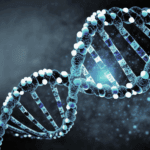While most people associate Vitamin D with bone health and immune defense, its role in skin health often flies under the radar. But make no mistake—this “sunshine vitamin” is quietly working behind the scenes to keep your skin looking and feeling its best. And when it’s missing? Your skin is one of the first places to blow the whistle.
Vitamin D isn’t just something we get from sunshine and fortified milk—it’s a hormone-like nutrient that influences everything from immune response to inflammation control and skin regeneration. When levels fall too low, a whole chain reaction begins—and your skin might just be the loudest protester.
Here’s a breakdown of the visible, feel-able signs your skin might use to alert you to a vitamin D deficiency.
🌵 1. Dry, Itchy Skin That Feels Like a Desert
If you’ve tried every lotion and cream in the aisle and your skin still feels like sandpaper, it might not be about your skincare—it could be what your skin is missing from within.
Vitamin D plays a central role in keeping the skin’s outer layer (the epidermis) hydrated and healthy. It helps maintain the protective barrier that keeps moisture in and irritants out. When that system falters due to low vitamin D, your skin can lose hydration rapidly, especially in dry climates or during winter.
Where it shows up: Arms, legs, face—particularly areas frequently exposed to the elements.
Fun fact: Studies show that people with chronic dry skin conditions often have lower-than-average Vitamin D levels.
Read more: That Bizarre Eye Twitch You Always Get? Here’s What Causes It—and When to See a Doctor
🕒 2. Cuts and Scrapes That Heal in Slow Motion
Your skin is a natural healer—tiny cuts and bruises usually disappear before you even remember them. But when Vitamin D is low, that healing process may slow dramatically.
This nutrient boosts the production of compounds that help rebuild skin tissue, fight off infection, and reduce inflammation during the healing process. Without enough Vitamin D, your body’s “repair crew” works at half speed.
Common signs: Bruises that linger, scratches that scab over but don’t fully close, or small wounds that get infected more easily.
Bonus insight: People recovering from surgery or major skin injuries often need more Vitamin D to support proper recovery.
🔥 3. Inflamed Skin and Eczema Flare-Ups
If you’ve got eczema or another inflammatory skin condition, Vitamin D might be your secret skincare ally.
Why? Because Vitamin D helps modulate the immune system, keeping inflammatory responses in check. Without it, the immune system may become overreactive, sending out skin inflammation as its protest flag.
What it looks like: Red, itchy, inflamed patches that often appear on the hands, neck, elbows, and behind the knees. In children, it can also appear on the cheeks or scalp.
Science spotlight: Research suggests that Vitamin D supplements can help reduce eczema symptoms in both children and adults—especially in the colder months when sun exposure drops.
🎯 4. Surprise Breakouts and Adult Acne
Breakouts in your 30s or 40s? Blame hormones—or maybe your Vitamin D levels.
Vitamin D helps regulate sebum production (your skin’s natural oil) and reduces inflammation. When you’re deficient, oil glands might go into overdrive, clogging pores and giving rise to acne.
Where it hits: Cheeks, chin, and forehead are common areas, but breakouts might also appear along the jawline or back.
Did you know? Vitamin D’s antimicrobial properties can also help fight acne-causing bacteria like Propionibacterium acnes. So when you’re low on D, those bacteria get a free pass.
Read more: Scientists Discover That Increased Oxygen Helps the Brain Grow More Neurons Early in Life
🌑 5. Dull, Discolored, or Uneven Skin Tone
Glowing, radiant skin isn’t just a skincare goal—it’s a sign of healthy circulation, balanced hormones, and good nutrient levels, including (you guessed it) Vitamin D.
A deficiency can cause reduced blood flow to the skin and disrupt melanin production, leading to a tired, uneven, or pale complexion. It might not be super obvious at first, but if your skin tone looks flatter or duller than usual, it’s worth looking into your vitamin levels.
Visible signs: Skin that appears ashy, yellowish, or patchy in tone; sometimes, dark circles appear more prominent.
Extra tip: Unlike tanning, healthy skin tone from adequate Vitamin D doesn’t damage your skin—so skip the sunbeds and aim for safe sun exposure or a supplement.
🧱 6. Psoriasis Flare-Ups That Just Won’t Quit
If you live with psoriasis, you know how tricky it can be to manage. But Vitamin D might be one of your most underused tools.
This vitamin helps slow down the rapid skin cell turnover that defines psoriasis. When your levels are low, those thick, scaly patches can get more frequent or more intense.
Where it appears: Scalp, elbows, knees, and lower back are common hotspots.
Scientific backing: Many psoriasis treatments actually include synthetic Vitamin D analogs because of how well they help regulate skin cell behavior.
💡 More Than Skin Deep: Other Signs You Might Be Low on Vitamin D
While your skin can be the first whistleblower, Vitamin D deficiency affects much more than your appearance. Here are other symptoms to watch for:
- Persistent fatigue
- Low mood or symptoms of depression
- Muscle aches or weakness
- Frequent infections
- Hair thinning or loss
☀️ Where to Get Your Dose of D
- Sunlight: Just 10–30 minutes of midday sun exposure on bare skin a few times a week may be enough for many people—depending on skin tone and location.
- Food sources: Fatty fish (salmon, sardines), cod liver oil, egg yolks, and fortified dairy or plant-based milk.
- Supplements: Available over the counter, but always best to consult a healthcare provider for proper dosage.
⚠️ A Word of Caution
Too much Vitamin D from supplements can lead to toxicity—causing nausea, kidney issues, and more. Stick to recommended doses and get your levels tested before making big changes.
Read more: This Natural Plant Extract Can Remove Up to 90% of Microplastics From Water
Wrapping It Up: Listen to Your Skin
Think of your skin as your body’s alert system. It might not speak, but it definitely signals when something’s off. Dry patches, stubborn acne, delayed wound healing, or flare-ups could all be your body waving a Vitamin D deficiency flag.
Rather than covering up the symptoms, go a level deeper—literally. A simple blood test and some mindful sun time might be all it takes to put the glow back in your skin (and the spring in your step).










